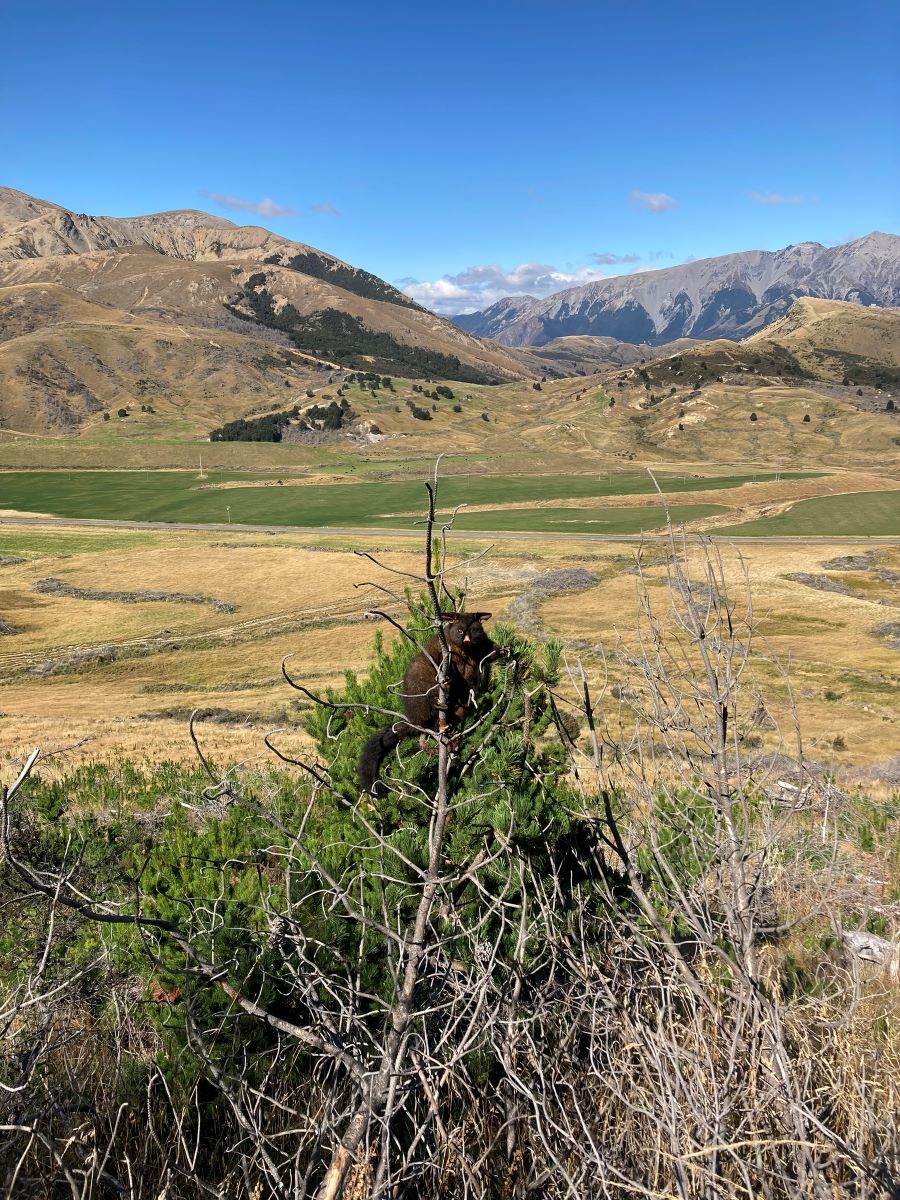The enemy of my enemy
Do possums and rodents prevent the spread of wilding pines? Scion’s research is finding out whether these seed-hungry mammals are a help or a hindrance to wilding pine invasions.

Wilding conifers are a major threat to New Zealand’s environment and economy. Understanding how these species invade and re-invade the landscape is critical to win the battle against these invasive trees.
As part of the complex puzzle of re-invasion Scion scientists are investigating how animals can affect wilding conifer populations by using their seed as a food source (seed predation), reducing the number of seeds in the environment.
Determining what animals eat these seeds, and in which habitats, is crucial to understand wilding conifer re-invasion patterns. One of the suspects that might eat conifer seed is another invasive pest – the brushtail possum (Trichosurus vulpecula).
Scion’s invasive plant ecologists have conducted field trials under different environment types (pasture, tussock, beech forest, ground-controlled wilding areas, dead wilding forest) in Arthur’s Pass, South Island, to investigate which animal species are conifer seed predators. Seeds were eaten at variable levels across these areas, with the highest levels of predation seen in the beech and dead wilding forest areas. Low predation areas such as tussock are particularly vulnerable to future invasion and re-invasion as there are higher levels of seed available left to grow.
Scion’s invasion ecologist Tom Carlin says this research will support management of wilding conifers and the risk of continued seed spread.
“Understanding which animal species are eating conifer seeds, and how quickly, are crucial questions in finding out how vulnerable different areas are to conifer invasion.
“Aotearoa is home to many seed-eating birds and insects, however it also supports large populations of exotic granivores such as mice and rats.
“By removing these exotic mammals from the environment, which is necessary to protect our native species, there is a risk we will inadvertently help conifers spread more rapidly by reducing their seed predation pressure. This project was initiated to help determine that risk, and if possible, help prevent it.”
Possums as guinea pigs
Early on, Scion teamed up with Willowbank Wildlife Reserve in Christchurch to investigate what animals might be eating the seeds based on teeth marks on the sticks that seed was mounted on. Common knowledge suggests possums don’t eat seeds from the forest floor, so the experiment was replicated in the possum enclosure to find out.
Willowbank Wildlife Reserve is home to two possums, Tiny and Dobbie. If the damage done to the sticks in their habitat matched what was observed in the field trial, we could determine the culprits.
Out in the field, footage from camera traps and feeding stations confirmed that exotic mammals (mice, rats, possums) were the main culprits although insects were also responsible for eating seeds.
Willowbank Wildlife Reserve Community and Conservation engagement manager Shaun Horan shares his enthusiasm for protecting New Zealand’s ecosystems.
“Willowbank has been excited to collaborate with the team at Scion for this study. “It harmonises with the conservation efforts Willowbank strives for and has aided us to begin conversations with our visitors about wilding pines in New Zealand.”
The wilding pine problem
Wilding pines are introduced species that become invasive in environments if not managed well, threatening native ecosystems (and the biodiversity within), production lands (grazing) and change the vistas of iconic landscapes. The worst wilding offender, Lodgepole pine (Pinus contorta), grows readily and will form dense forests if left untreated.
Wilding pines already cover more than 1.8 million hectares of New Zealand with a further 7.5 million hectares of productive or conservation land (approximately 28% of New Zealand’s land area) threatened over the next 30 years.
The New Zealand government established the National Wilding Conifer Control Programme (NWCCP) to deal with this growing problem, but continuous management is required. Current oneoff treatments are not able to eliminate wildings fully and prevent cleared land from re-invasions. Preliminary analysis shows that current control measures such as hand weeding, felling or herbicide application, are unlikely to achieve eradication.
Vive la résistance – managing wilding conifer re-invasion
Vive la résistance is an MBIE Endeavour-funded five-year research programme awarded $12.85 million in 2021. The Scion led programme team is investigating effective strategies for long-term resistance to re-invasion of wilding pines.
New methods and management approaches are developed and tested under this project and include the support and analysis for operational large-scale control trials, aerial and satellite imaging to detect and monitor emerging wilding pines, multifactorial experiments to identify drivers and inhibitors of re-invasion and computer modelling of the “behaviour” of wilding populations. The highly collaborative programme involves researchers from Scion, Lincoln University, University of Canterbury, Manaaki Whenua – Landcare Research, Australian National University, and the National Centre for Atmospheric Research (USA) to support the NWCCP.
This seed predation research is just one piece of the puzzle to understanding drivers of re-invasion risks. This knowledge helps us move towards accurate computer modelling predictions for seed dispersal and to inform recommendations for wilding pine management practices to break the inevitable cycle of treatment, re-invasion and re-treatment.
This research was recently published in Biological Invasions. Learn more about our wilding pine research here.
